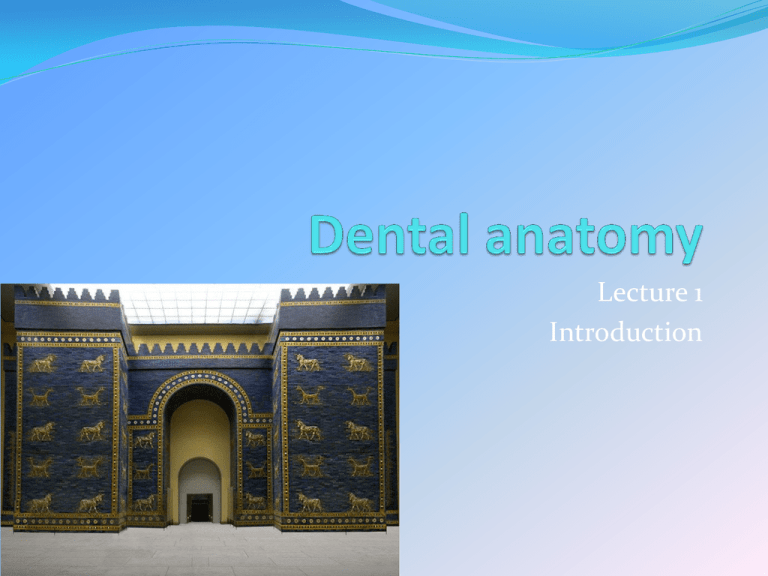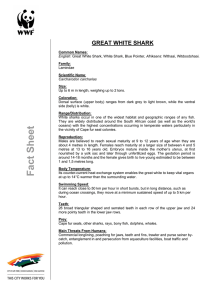Lecture 1 Introduction
advertisement

Lecture 1 Introduction Definition Dental anatomy: is the study of the development, morphology, function, and identity of each tooth in the human dentitions, as well as the way in which the teeth relate in shape, form, structure, colour, and function to the other teeth in the same dental arch and in the opposing arch. Thus, the study of dental anatomy, physiology, and occlusion provides one of the basic components of the skills needed to practice all phases of dentistry. Nomenclature “system of names or terms ” Dense=tooth Dental=anything related to tooth Man is a hetrodent, which means that he has different-shaped teeth. Man is a diphyodent, which means that he has two sets of teeth; primary teeth (deciduous teeth or milk teeth or baby teeth) and permanent teeth (succedaneous teeth). The teeth Teeth are grouped into: 1. Anterior teeth: which include the incisors and the canines. 2. Posterior teeth: which include the premolars and molars. The jaw The jaw is the bone which caries the teeth. There are two jaws: 1.The upper jaw: which is fixed , and is called “The maxilla”. 2.The lower jaw: which is movable, and is called ”The mandible”. Upper teeth Lower teeth The deciduous teeth and their formula (mammalian teeth) The deciduous teeth are 20 in number. They have the following formula: (For each side of the upper and lower jaw) I = Incisors (central and lateral incisors) C = Canine M = Molars (first and second molars ) At birth, there are no teeth present in the mouth, but many teeth in various stages of development are found in the jaws. After birth,(post-natal period), the eruption of deciduous teeth start at six months and lasts until two and a half years. The deciduous teeth stay until the permanent teeth erupt at about six years of age, when the transition of the permanent dentitions begins. The permanent teeth and their formula (mammalian teeth) The permanent teeth are 32 in number, including third molars when present. They have the following formula: (For each side of the upper and lower jaw) I = Incisors (central and lateral incisors) C = Canine P = premolars (first and second Premolars) M = Molars (first and second molars ) The permanent teeth The transition to permanent dentition begins with the emergence and eruption of the 1st permanent molars at the age of six years , followed by shedding of the deciduous teeth and the emergence and eruption of the remaining permanent teeth. This process requires about 20 years to be completed. Tooth Eruption Deciduous Permanent Incisors 6 - 10 months 7 - 8 years Canine 16 - 20 months 11 years Premolars Molars 11 - 13 years 10 - 24 months 6 - 25 years Note: The deciduous teeth of the primary dentition are smaller than the teeth of the same type in the permanent dentition, but they generally resemble in form.





